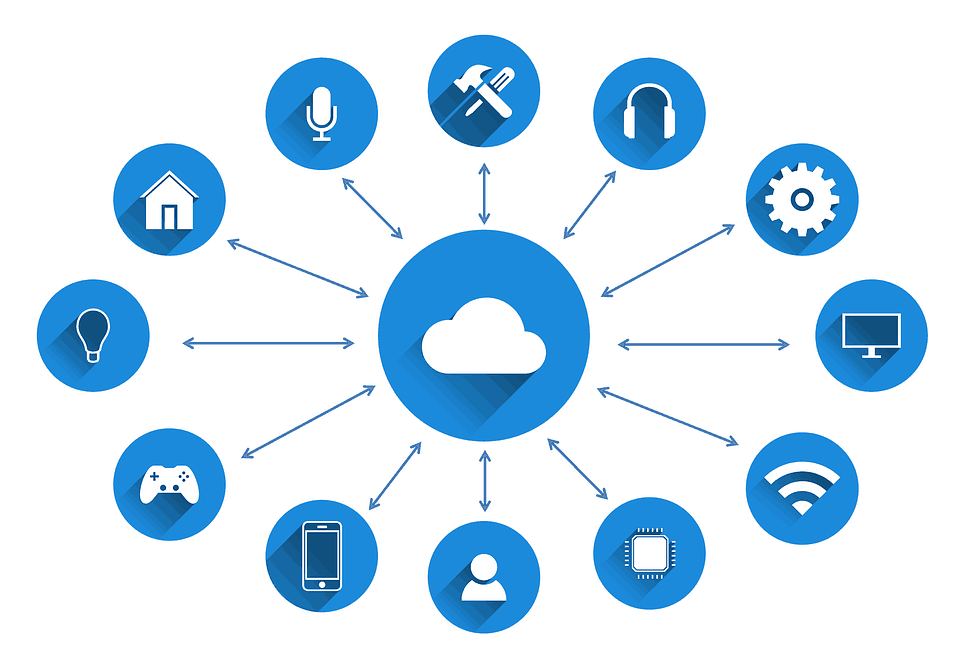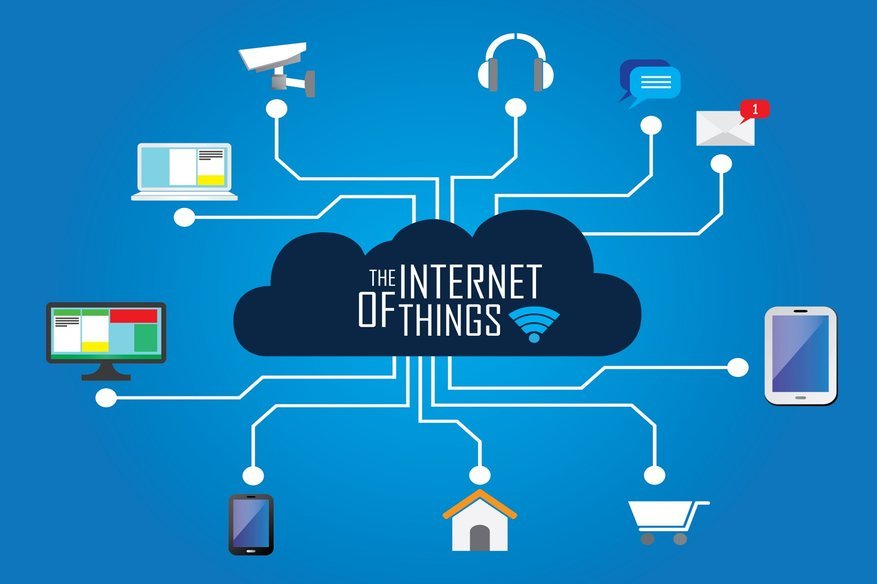In today’s digital era, the Internet of Things (IoT) has evolved from an emerging technology to an integral part of our daily lives. From smart home devices like thermostats and security cameras to advanced industrial solutions that optimize production and logistics, IoT is revolutionizing the way we interact with the world around us. However, as the number of IoT devices continues to grow, so does the concern about the security of these devices and the networks they connect to.
In this article, we will explore how to implement a secure network for IoT, a critical necessity to protect your devices and data from potential cyber threats. You will learn best practices, strategies, and tools you can use to secure your IoT infrastructure, maintaining the privacy and integrity of your information.

The Importance of IoT Security
The concept of IoT involves thousands of devices being connected to each other, often without direct human intervention. These devices collect, transmit, and process data, making them attractive targets for cybercriminals. If an IoT network is not properly secured, it can be vulnerable to various types of attacks, such as:
- Unauthorized access: IoT devices can be hacked if access controls are not well defined or if devices are not properly authenticated.
- Denial of Service (DDoS) attacks: Attackers can exploit IoT networks to launch DDoS attacks, overwhelming servers and causing service outages.
- Sensitive data leaks: Given the volume of data handled by IoT devices, a security breach can compromise personal and confidential information.
Therefore, ensuring that your IoT network is secure is not only a good practice but a necessity to protect both your devices and user privacy.
Risk and Threat Assessment
Before implementing any security measures, it is essential to understand the risks and threats your IoT network may face. Below, we explore some of the most common threats:
- Data interception: IoT devices often transmit data over wireless networks, making them susceptible to interception if not properly encrypted.
- Outdated software: Many IoT devices run firmware or software that, if not regularly updated, may have vulnerabilities that attackers can exploit.
- Unauthorized physical access: Some IoT devices are physically exposed, allowing attackers to manipulate or install malware on them if not properly secured.
Once you understand these risks, you can make informed decisions on the security measures to implement in your IoT network.
Step 1: Establishing a Secure Network for IoT
The foundation for a secure IoT network begins with creating a robust infrastructure capable of supporting the security challenges posed by IoT devices. Here are the key components to consider:
1.1 Network Segmentation
One of the best practices for improving IoT network security is to segment the network. This means creating separate networks for IoT devices, isolating them from the company’s main network or more critical devices. By segmenting the network, you minimize the impact of a potential attack. If an IoT device is compromised, the attacker will only have access to the segmented network, not the more sensitive infrastructure.
1.2 Using Virtual Private Networks (VPNs)
Virtual private networks (VPNs) allow IoT devices to connect to the network securely by encrypting all communication between the device and the network. This is an essential measure when IoT devices connect to the internet, as it prevents data interception and protects user privacy.
1.3 Firewalls and Intrusion Prevention Systems
Using firewalls and intrusion prevention systems (IPS) on the IoT network can help detect and block unauthorized access attempts. An appropriate firewall can filter network traffic, allowing only legitimate communications between IoT devices and the rest of the IT infrastructure. An IPS system, on the other hand, continuously monitors traffic for suspicious behavior, alerting administrators to any potential attack attempts.
1.4 Implementing Secure Access
Secure access to IoT devices is another critical component of the network. It is essential to establish strict access control policies, limiting who and which devices can interact with the IoT network. This includes user and device authentication, using strong passwords, and implementing multi-factor authentication (MFA) to add an additional layer of security.
Step 2: Securing the IoT Devices and Connections
Once you have established a secure network, it’s time to focus on securing the IoT devices themselves. Here are some key recommendations:
2.1 Data Encryption
Encryption is one of the key pillars to ensure the security of data transmitted by IoT devices. Use security protocols like HTTPS, TLS, or SSL to encrypt communications. Ensure that all sensitive data is transmitted securely to prevent attackers from intercepting it.
2.2 Firmware and Software Updates
IoT devices, like any other internet-connected equipment, need to be kept up to date. Firmware and software updates not only improve device performance but also fix security vulnerabilities. Make sure to set up an automatic update process for devices whenever possible, or conduct manual monitoring to ensure that devices are up to date.
2.3 Physical Protection of Devices
Many IoT devices are located in physically accessible areas, meaning they can be tampered with if not properly protected. Ensure devices are installed in secure locations, and if possible, implement physical protection measures like security cameras and locks.
2.4 Authentication and Authorization of Devices
Ensure that each IoT device connecting to the network is properly authenticated. This can be achieved by implementing unique access keys for each device, avoiding the use of default or easily guessable credentials. Additionally, apply authorization policies that only allow necessary devices to interact with the network.
Step 3: Continuous Monitoring and Incident Management
IoT security is not a one-time process but must be managed continuously. Since threats can evolve quickly, it is essential to implement a constant monitoring system to identify potential incidents before they cause significant damage. Here are some key strategies to achieve this:
3.1 Network Activity Monitoring
It is crucial to constantly monitor traffic on the IoT network. Use network monitoring tools to observe traffic behavior, identify anomalies, and detect unauthorized access or suspicious activities. With real-time analytics techniques, you can detect unusual patterns, such as a sudden increase in the amount of transmitted data, which could indicate a compromised device.
3.2 Incident Management Tools
Incident management is essential for responding quickly and efficiently to any threat or security breach. Implement an incident response plan that includes detailed procedures on how to handle an IoT network attack, identify compromised devices, and restore network functionality. Ensure all team members are familiar with the incident management process and that there are automated response tools to help mitigate damage quickly.
3.3 AI-Based Threat Detection
The use of artificial intelligence (AI) for threat detection in IoT networks is gaining popularity. AI can analyze large volumes of network traffic data and detect patterns that may go unnoticed by humans. Machine learning algorithms can identify abnormal behaviors that suggest a potential attack, enabling faster and more efficient responses.
3.4 Updating Policies and Procedures
As the threat landscape evolves, so too must security policies and procedures. Regularly review security policies to ensure they align with current best practices and address new vulnerabilities that may arise.
Step 4: User Training and Awareness
One of the most common threats to IoT security is the lack of awareness and training among users. Employees or users who do not understand the importance of security can be an entry point for attackers. Therefore, it is crucial to invest in continuous training for network users and administrators.
4.1 Security Awareness Programs
Implement regular security training and awareness programs for all IoT network users. These programs should cover topics such as the importance of strong passwords, recognizing phishing emails, properly handling sensitive data, and best security practices when using IoT devices. The more informed users are, the less likely they are to fall for attackers’ traps.
4.2 Attack Simulations and Response Exercises
Attack simulation exercises (also known as security drills) can be an effective tool for training users and the security team on how to respond to an incident. By simulating real attacks, employees can familiarize themselves with the necessary procedures and protocols to minimize damage in the event of an actual attack. These exercises also help identify potential weaknesses in the incident response system.
4.3 Fostering a Security Culture
Fostering a security culture within the organization is essential. Everyone should feel that IoT security is a shared responsibility. This includes everyone from network administrators to end-users, each playing an important role in protecting the IoT infrastructure.
Step 5: Regulatory Compliance
Compliance with regulations and standards is an integral part of the IoT security strategy. Depending on the industry you operate in, there may be specific laws and regulations that dictate how IoT devices and the data they generate must be protected. Make sure to understand the applicable regulations in your region or sector, such as:
- General Data Protection Regulation (GDPR): If you operate in Europe or deal with data from European citizens, GDPR sets strict guidelines on how personal data must be handled.
- California Consumer Privacy Act (CCPA): For businesses operating in California, this law establishes standards for the collection, use, and sale of personal data.
- Automotive Industry Standards (AUTOSAR): In the case of IoT in the automotive industry, these standards define the security requirements for connected systems.
Compliance with these regulations will not only help you avoid legal penalties but also strengthen customer trust in the security of your devices and services.
IoT Security as a Priority
Implementing a secure IoT network is no easy task, but it is essential to protect devices, data, and the connected infrastructure. From network segmentation to device authentication, continuous monitoring, and user training, every aspect of IoT security is crucial for creating a trustworthy and resilient environment against threats. If you follow the best practices outlined in this article, you will be well on your way to building a secure IoT network that minimizes risks and maximizes the benefits of connectivity.
Remember that IoT security is not a one-time effort but an ongoing investment in technology, procedures, and education. As IoT devices continue to evolve and the threat landscape changes, it is crucial to maintain a dynamic and adaptable security strategy. With the right measures, you can protect your IoT network and leverage its full potential without compromising security.
Step 6: Future Considerations for IoT Security
As IoT continues to grow and evolve, the security of these devices becomes increasingly crucial. Technological advances, such as artificial intelligence, 5G, and mesh networks, will bring new opportunities but also new challenges. To maintain a secure IoT network, it is important to stay informed about emerging trends and adapt to them.
6.1 AI Integration for Predictive Security
One of the most promising trends in IoT security is the use of artificial intelligence (AI) for real-time threat detection. AI-based solutions can analyze behavioral patterns on the network, learn from them, and predict attacks before they occur. For example, an AI system could detect unusual behavior on an IoT device, such as an unexpected increase in data usage or changes in communication frequency, which could indicate the device has been compromised.
Implementing AI in IoT security not only enhances threat detection capabilities but also reduces the burden on network administrators by automating incident response and alerting to potential issues before they become serious threats.
6.2 The 5G Challenge
With the rollout of 5G, IoT is expected to undergo a significant transformation. This new network promises to improve speed and connectivity, allowing more IoT devices to be connected simultaneously. However, the increase in the number of devices and the speed of data transmission also presents new security challenges.
5G will enable the creation of more advanced mesh networks, where IoT devices connect to each other, creating a more dynamic and flexible network. However, these networks could also be more vulnerable to distributed attacks. To mitigate these risks, advanced security measures will be essential, such as end-to-end encryption, network segmentation, and the use of VPNs to protect information in transit.
6.3 IoT Mesh Networks: Opportunities and Challenges
IoT mesh networks are gaining popularity, especially in industrial environments, due to their ability to provide more stable and resilient connectivity. In a mesh network, IoT devices can communicate with each other and relay data, creating a network that is more resistant to failures. However, these networks also present additional security risks.
The primary security concern with mesh networks is that if one device is compromised, it could affect other devices on the network. Therefore, it is essential to implement robust security measures on each IoT device, ensuring the mesh network is properly segmented and that each device is individually authenticated. Constant firmware updates and real-time monitoring will be key to ensuring the security of mesh networks.
Step 7: Ongoing Security Evaluation and Auditing
IoT security is not a static process; it must be continuously evaluated and audited to ensure that defenses remain strong against new threats. Performing regular security audits is an essential part of any IoT security strategy, as it helps identify vulnerabilities before attackers can exploit them.
7.1 Regular Security Audits
Security audits involve periodically reviewing all components of the IoT infrastructure, from devices to networks. These audits should look for weaknesses in network configuration, access policies, device software, and data encryption. Audits can be conducted by internal staff or external cybersecurity experts to provide an impartial view of network security.
7.2 Penetration Testing
Penetration testing is controlled simulations of cyberattacks designed to assess system vulnerabilities. These tests are crucial for identifying weaknesses in security that attackers could exploit. Penetration tests should be conducted regularly to ensure new vulnerabilities are detected and addressed in time.
7.3 Post-Implementation Monitoring
Once security measures have been implemented, monitoring should continue consistently. Post-implementation monitoring involves overseeing all IoT devices and networks for any suspicious activity. This real-time monitoring can prevent attacks more effectively than periodic audits, as it enables the detection of incidents at their initial stages.
The Future of IoT Security
As the world continues to advance toward a more interconnected era, IoT security becomes a crucial component of global technological infrastructure. From smart homes to automated factories, IoT devices are present in nearly every aspect of our lives. Implementing a secure IoT network is not just about protecting devices, but about ensuring privacy, data integrity, and operational continuity for organizations.

The best practices outlined in this article provide a clear guide to building a secure IoT network. By applying security measures from the start, segmenting networks, using encryption and authentication, and maintaining continuous monitoring, organizations can significantly reduce the risks of attacks and ensure that the benefits of IoT are not overshadowed by security threats.
The future of IoT security is dynamic, but with a proactive strategy and a focus on continuous updates, businesses can effectively protect their IoT infrastructures and ensure they continue to capitalize on the opportunities offered by this innovative technology.



